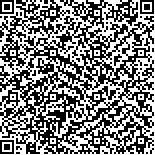下载中心
优秀审稿专家
优秀论文
相关链接
摘要

通过一种卷积算法,从遥感分类数据中计算城市用地比例,并以该比例作为划分城市和非城市区的阈值,进而提取城市范围。方法构建了评价提取结果的指标体系,以确定卷积模板大小和阈值的选取。以北京为研究区,利用2007年SPOT 5多光谱影像分类数据,对方法的可行性进行了验证。结合统计数据中的建成区面积,采用504种模板和阈值组合进行提取试验,讨论了模板和阈值对提取结果的影响。最终选择(205, 51)的模板和阈值组合,对城市范围进行提取。研究结果表明:(1)该方法解决了遥感监测的城市用地分布区与城市范围存在差异的问题,为城市研究基础数据的准备提供了新的方法;(2)阈值过高或过低会造成城市范围的明显缩小或扩大;较小的模板不利于消除随机误差,较大的模板则会导致结果过于平滑;(3)对于SPOT 5多光谱影像分类数据,模板大小在193—205像元(约4 km2)、阈值接近50时,提取结果最好。
With a convolution algorithm, urban land use proportions were calculated based on remote sensing classifi cation data, which were used as thresholds to distinguish between urban and non-urban area, and then urban extent was extracted. Indexes system was proposed to determine the size of the convolution template and the threshold by evaluating extraction results. We took Beijing as a study area and validated the feasibility of the method by using classifi cation data of SPOT 5 multi-spectral images. Combining with the built-up area of statistical data, 504 combinations of template and threshold were used to do the extraction test and the effects of templates and thresholds on the extraction results were discussed. Finally, combination of (205, 51) was selected to extract the urban extent. The result showed that: (1) this method solved the problem that urban land acquired from remote sensing monitoring differed from urban extent that geographical studies cared about and provided a new way to prepare the basic data for urban study. (2) Test result indicated that both the lower or higher threshold will exaggerate or understate the extracted result, and that a small size of template cannot eliminate the random error meanwhile a large size would lead the result being too smooth. (3) For the classifi cation data of SPOT 5 multi-spectral image, the extraction results were the best while the size of the template ranges from 193 to 205 (around 4 km2) and the threshold is around 50.

